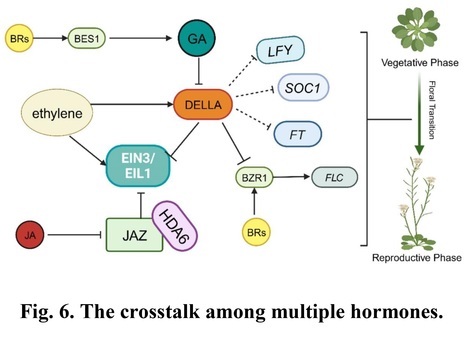Authors: Xiaoxiao Li, Chuyu Lin, Chenghao Lan and Zeng Tao.
Journal of Experimental Botany (2024)
Abstract: "The timing of the developmental transition from the vegetative to the reproductive stages is critical for angiosperm and fine-tuned by the integration of endogenous factors and external environmental cues to ensure proper and successful reproduction. Plants have evolved sophisticated mechanisms to response to diverse environmental or stress signals, which may be mediated by plant hormones which coordinate their flowering time. Endogenous and exogenous phytohormones such as gibberellin (GA), auxin, cytokinin (CK), jasmonate (JA), abscisic acid (ABA), ethylene (ET), brassinosteroids (BR) and the cross-talk among them are critical for the precise regulating of flowering time. Recent studies on the model flowering plant Arabidopsis thaliana revealed that diverse transcription factors and epigenetic regulators play key roles in the phytohormones that regulate floral transition. This review aims to summarize current knowledge on the genetic and epigenetic mechanisms that underlying the phytohormone control of floral transition in Arabidopsis, offering insights into how these processes are regulated and their implications for plant biology."



 Your new post is loading...
Your new post is loading...








